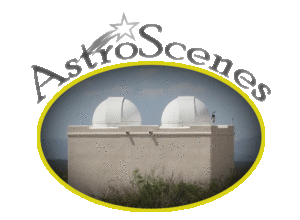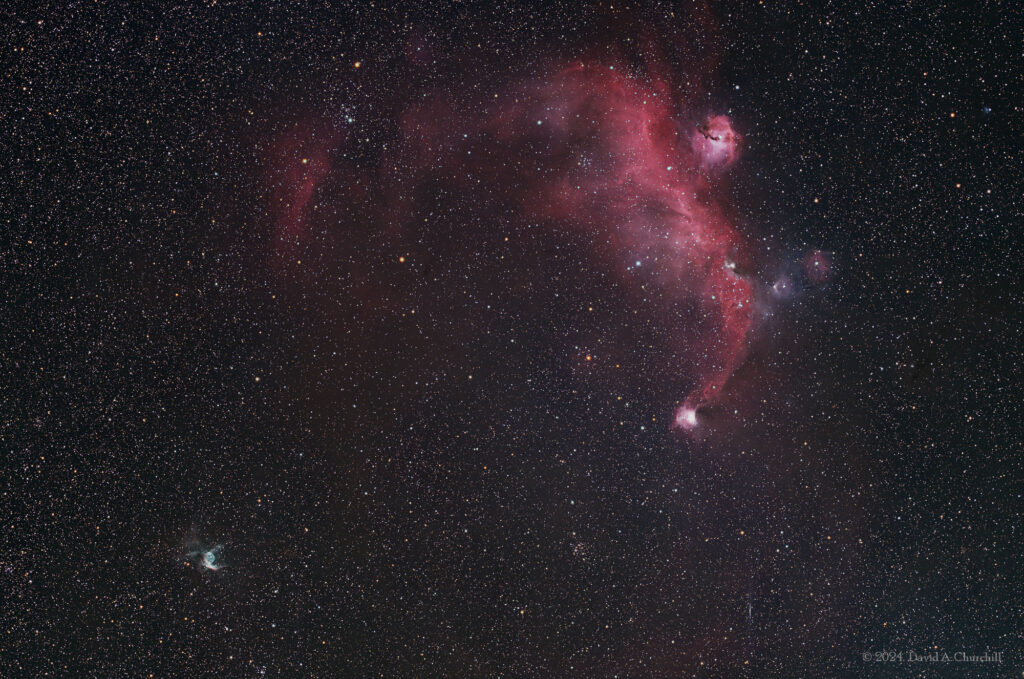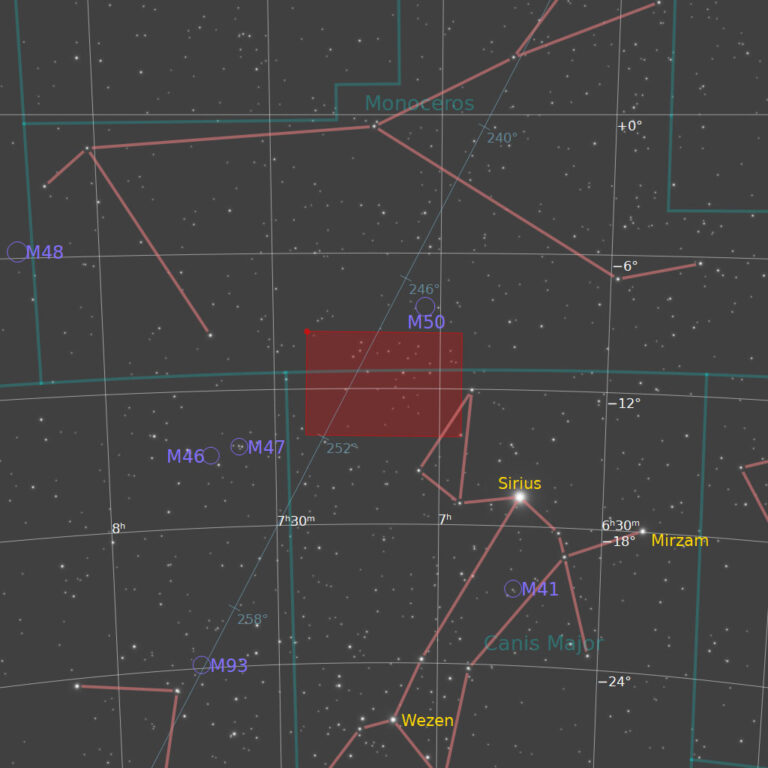IC 2177 Region
Seagull Nebula & Thor's Helmet, Emission Nebulae, Monoceros/Canis Major
December 2024. Cave Creek Canyon Observatory, Arizona Sky Village
- Description
- Technical
- Links
This image mainly consists of the the region around IC 2177, The whole area is commonly known as the Seagull Nebula due to its distinctive shape with IC 2177 being the Seagull’s head. This region of nebulosity lies along the border between the constellations Monoceros and Canis Major. It is a roughly circular H II region centered on the Be star HD 53367. This nebula was discovered by Welsh amateur astronomer Isaac Roberts and was described by him as “pretty bright, extremely large, irregularly round, very diffuse.”
The name Seagull Nebula is applied by amateur astronomers to this emission region, although it more properly includes the neighboring regions of star clusters, dust clouds and reflection nebulae. This latter region includes the open clusters NGC 2335 and NGC 2343.
NGC 2359 (also known as Thor’s Helmet, Sharpless 2-298 and Gum 4) can be seen in the lower left of the image, and is an emission nebula in the constellation Canis Major. The nebula is approximately 3,670 parsecs (11.96 thousand light years) away and 30 light-years in size. The central star is the Wolf-Rayet star WR7, an extremely hot star thought to be in a brief pre-supernova stage of evolution. It is similar in nature to the Bubble Nebula, but interactions with a nearby large molecular cloud are thought to have contributed to the more complex shape and curved bow-shock structure of Thor’s Helmet.
The name Seagull Nebula is applied by amateur astronomers to this emission region, although it more properly includes the neighboring regions of star clusters, dust clouds and reflection nebulae. This latter region includes the open clusters NGC 2335 and NGC 2343.
NGC 2359 (also known as Thor’s Helmet, Sharpless 2-298 and Gum 4) can be seen in the lower left of the image, and is an emission nebula in the constellation Canis Major. The nebula is approximately 3,670 parsecs (11.96 thousand light years) away and 30 light-years in size. The central star is the Wolf-Rayet star WR7, an extremely hot star thought to be in a brief pre-supernova stage of evolution. It is similar in nature to the Bubble Nebula, but interactions with a nearby large molecular cloud are thought to have contributed to the more complex shape and curved bow-shock structure of Thor’s Helmet.
Telescope: Askar FRA300pro f5
Mount: Astro Physics Mach-1
Camera: ZWO ASI6200MC pro
Guider: ZWO Off-Axis-Guider / ZWO120MM Mini
Filters: None. Integrated ZWO UV/IR Cut Filter Cover
96×5 mins = 480 mins
Total Imaging Time: 8h 00m
Data Imaged remotely on 3 nights during December 2024.
Data acquisition & Processing by David Churchill.
None


